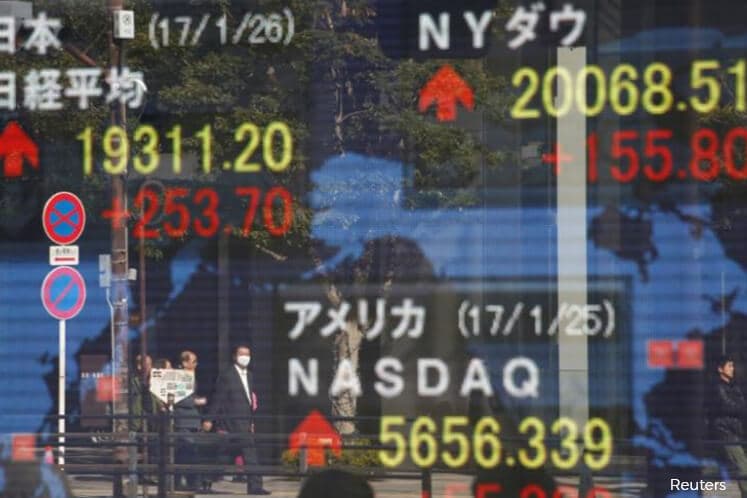
(May 17): Successful investors rely on basic analyses of hard facts and trends and try to avoid short-term emotional responses. They evaluate fundamental forces, decide on the investment themes they imply, and then invest. Of course, their positions are constantly examined in light of new data, and investments are eliminated if the basic atmosphere no longer supports them. Still, successful investments are usually long-term because they flow from forces that are significant and likely to be in place for some time — years or even decades.
The challenge is to recognise the difference between a sea change of lasting consequences and ephemeral random noise. Most security-market analysts and investors thrive on short-term swings that they interpret as being of huge significance. The media gains attention — and advertising dollars — by interpreting every minor wiggle as an earth-shattering event. So it takes conviction and willingness to stand up to the crowd to stay focused on long-run economic and financial trends and the implied investment implications.
With Trump’s agenda mostly stalled, many investors are swinging to my earlier conviction that much of the post-election euphoria was overblown, at least in terms of instant actions, and are reorienting their sights to the long-term.
I recommend six long-term economic and investment themes.
1) Huge fiscal stimulus, primarily infrastructure- and military-related, in reaction to mad-as-hell voters who have suffered flat or mostly declining purchasing power for more than a decade. These declines were importantly caused by globalisation in the last three decades. Despite Marine Le Pen’s loss in this month’s presidential election in France, the populism and anti-globalisation sentiments that elected Trump and led to the Brexit vote last June persist.
Major fiscal stimulus could take two to three years to become effective after working its way from congressional approval to actual spending and job creation. Nevertheless, it will constitute a major investment theme and will push US economic growth to the 3% to 3.5% range, almost double the 2.1% average since this business recovery started in mid-2009, the weakest in the post-World War II era.
2) Globalisation that shifted manufacturing from the West to Asia is largely completed. Manufacturing’s share of US gross domestic product fell from about 17% in 1997 to around 12% by 2009, but then flattened. Still, inner workings of the process continue as low-end manufacturing is now moving from China to even-cheaper locales, such as Vietnam and Pakistan.
Many who formerly felt safe in well-paying jobs and looked forward to comfortable retirements while enjoying low-cost imports from China had no idea that they were vastly overpaid by Asian standards — and that those low-cost imports were coming at their expense. So now they are angry and enthralled by politicians who blame their plight on immigrants and imports, and promise to restore their incomes through protectionist measures.
Those former manufacturing employees in the West who have been re-employed have generally moved to lower-paying areas. Also, hiring since the economic recovery commenced in mid-2009 has been focused on low-paying sectors such as leisure and hospitality.
Still, with the movement of manufacturing and other production from West to East largely completed, the traditional pattern of employment shifts due to technology changes will likely resume. The gap created by globalisation remains, but there will probably not be big new waves of displaced workers.
3) Another long-term development with immense economic and investment implications is the worldwide ageing of most populations. Fertility rates in most major countries except India are below the 2.1 level needed to maintain, much less grow, the population. Th e UN projects that Japan, China, Germany and Russia will see their populations decline by 2050 while the US, Canada and the UK will increase due to immigration off setting low fertility rates. Th ose populations are projected to grow through 2050.
Japan’s population is already falling as it has the longest life expectancy of any G-7 country and the lowest fertility rate. In addition, despite the need for new workers as the population falls and ages, women in Japan are still discouraged from entering the labour force. In China, the earlier one child-per-couple policy has slashed the number of prime new labour force entrants by about 400 million.
Pessimists maintain that ageing and retiring post-war babies in the US, as well as Trump’s anti-immigration policies, will severely limit labour-force growth. At the other end of the spectrum are those who believe robots will replace people to the point that there will be too few earners to buy the nation’s output. I disagree with both views, and forecast real US gross domestic product annual growth of 3% to 3.5% thanks to 2.5% yearly rises in new tech-driven productivity and 1% increases in employment, the historic norms. Plus the labour participation rate, now at 62.9% vs the 67.3% peak 17 years ago, should increase if the retirement age is raised. And the participation rate for those over 65 is rising as seniors are healthier and many have inadequate assets to retire.
This is the first of a two-part series.